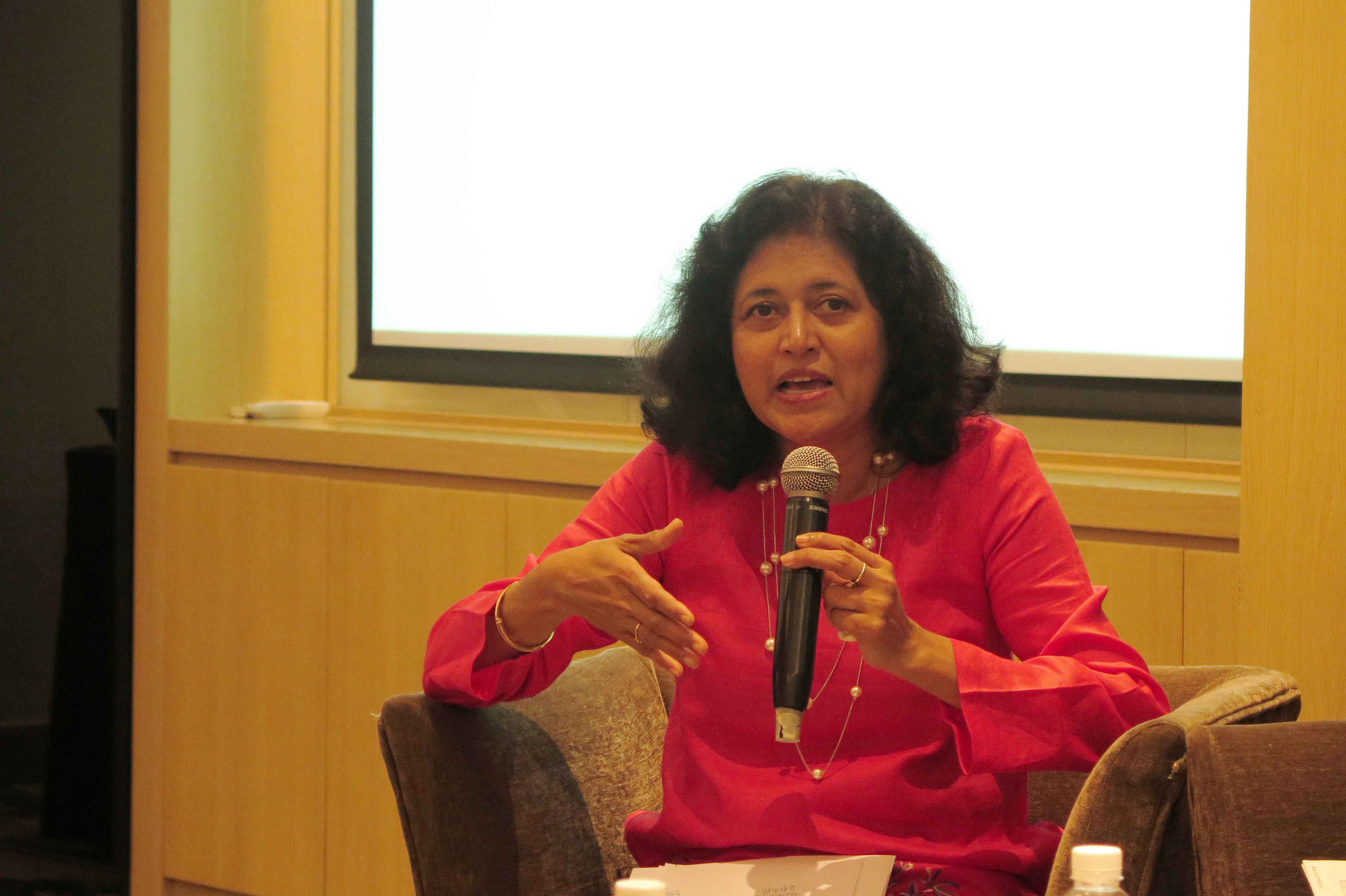
News & Events
Innovations and Partnerships for a Healthier Asia
“Let food be thy medicine” – the relevance of Hippocrates’ words only grow as we enter today’s age, where healthy eating has become the new trend in the face of increasing public health problems, and food innovators are being tasked with the challenge to balance nutrition with taste.
Today’s consumers recognise the importance of choosing wisely what they feed their bodies day by day, but this awareness can only go so far without the commitment of industry, government and various key stakeholders to bring healthier choices to the table and realise the potential of a concerted approach in leading healthy eating behaviours.
Speaking to ARoFIIN, Kalpana Bhaskaran, Domain Lead at the Applied Nutrition Research and Head of the Glycemic Index Research Unit at the School of Applied Science of Temasek Polytechnic, discusses some key trends driving food innovation in Asia, and how such innovations can be best leveraged to promote better eating habits.
What are some of the trends in food innovation which are addressing Asia’s growing public health challenges?
Food is intertwined with our health in ever more palpable and striking ways. Rates of food-related chronic health problems such as obesity, heart disease, and diabetes have skyrocketed in recent years. With globalisation, growing awareness of the relationships between food and health is contributing to new practices involving consuming food as a form of health, wellness, and medicine.
The health impacts of food products will be critical to food science and brand management strategies as the health costs and benefits of food choices become more apparent over the next decade. With demanding lifestyles, and increase in aging population, the trend towards replacing sit-down meals with on-the-go healthier food options is particularly acute among Asians.
Trends in food innovation will address the growing challenges of managing diabesity, sarcopenia, malnutrition, memory disorders, cardiovascular diseases and many more. Consumers also have growing expectations for food to have unique flavours with functional properties that vet their appetites for new taste as well as provide functional benefits beyond basic nutrition.

Dr Kalpana Bhaskaran moderating the panel on Food Innovation and the Role of Multi-stakeholder Partnerships in Promoting a Healthy Asia at the 4th ARoFIIN Roundtable on 26 July 2018 at the Pullman Thamrin in Jakarta, Indonesia.
How are the various stakeholders in Singapore working collectively to influence healthier eating behaviours? Are there any valuable lessons for other Asian countries?
Emphasising on the Whole-of-Government approach to beat diabetes and to encourage healthy eating among Singaporeans, Health Promotion Board (HPB) offers the Healthier Ingredient Development Scheme (HIDS) to develop products or ingredients which can be used at all hawker centres to prepare healthy food that is affordable.
The scheme encourages food manufacturers to innovate and develop a wider variety of healthier ingredients and products suited to local tastes, as well as supports the industry in promoting the uptake of healthier ingredients in Singapore’s food service. In addition, Enterprise Singapore (ESG) provides Capability Development Grant (CDG) for the development of innovative products by SMEs. Both ESG and HPB work with industry and various stakeholders including Institute of Higher Learning (IHLs) to develop healthier food products for Singapore and beyond.
Other countries can model this concerted approach, as this is an investment towards the future of the nation. Strengths and capabilities from different stakeholders can be tapped on to spark and hasten the process of innovation among SMEs.
There has been a great deal of attention put on low GI foods recently as healthy options to improve diets, how can we leverage on this trend to drive healthier eating habits among consumers?
Carbohydrates contribute to more than 50% of the total energy intake in Asians. Among the three macro nutrients, carbohydrates have the maximum impact on blood glucose levels. Hence, choosing the right quality of carbohydrates is very important.
There is a connection between low GI foods and the healthier eating trend. Consumers are unknowingly choosing low GI foods by eating vegetables, fruits, whole grains and legumes and low-fat dairy products. Food manufacturers should make use of this low GI trend to develop low GI healthier choice food products.
Health professionals and other stakeholders should work towards simplifying the low GI messages in a way that resonates with the target consumer.
How do you think consumers are responding to such product innovations and how can consumers’ acceptability be improved?
“There is often, if not always, a consumer appetite for innovation.” (Nielsen Breakthrough Innovation Report, 2014, p.8). Consumers want more new products on the market that are affordable, healthy, convenient and environmentally friendly. The drivers of new product purchasing, include affordability, transparency, convenience, brand recognition and novelty.
Consumer acceptability for any new innovative product can be improved if simplicity in delivering the message is the focal point. This does not mean that the product has to be simple in nature but that consumers have to understand it, whether it is immediately or over time, to guarantee consumer acceptability.

Dr Kalpana Bhaskaran is currently the Domain Lead for Applied Nutrition an Glycemic Index Research at Temasek Polytechnic, Singapore. She championed the design, planning and implementation of Singapore’s and the region’s first accredited Glycemic Index Research Unit (GIRU). She has a diverse portfolio of experience in clinical nutrition research, glycemic index testing, lecturing, project management, food product development and consultancy services. She is currently the Principal Investigator for five ongoing research studies in the area of Glycemic Index, Applied Nutrition,efficacy testing and dysphagia.Her project management experience includes vendor management, contract negotiations, strategic planning, team leadership management with expertise in leading and building cohesive cross functional teams, collaborating with local and overseas companies.She was awarded the “Inaugural Teaching Excellence Award” in 2009 for outstanding lecturing and pedagogy. She was conferred the National Day Honours award for recognition of her work and its impact to diabetes management and education in 2014. In September 2017, her team was awarded the Innergy award by the Ministry of Education, an award that recognises project teams who brought about significant benefits to stakeholders through their innovation efforts.
She is part of the Singapore Armed Forces Feeding and Institutional Catering advisory panel and offers her expertise in the area of food and nutrition. She is also in the Ministry of Health (MOH) working group on “Patient empowerment” which is one the initiatives by MOH to beat diabetes. She regularly acts as a food and nutrition consultant to local and overseas food companies and is a frequently featured commentator for her expert opinion on food and nutrition issues in both print and television media, Dr Kalpana is also frequently invited to speak at local and overseas conferences and seminars.
She is the Vice President of Diabetes Singapore and the Vice President of Singapore Nutrition and Dietetics Association. She is also the member of Academy of Nutrition & Dietetics, USA, Singapore Heart Foundation and Singapore Institute of Food Science and Technology.
Learn more about the nutritional challenges facing the region in ARoFIIN’s “Tackling Obesity in ASEAN”report.

